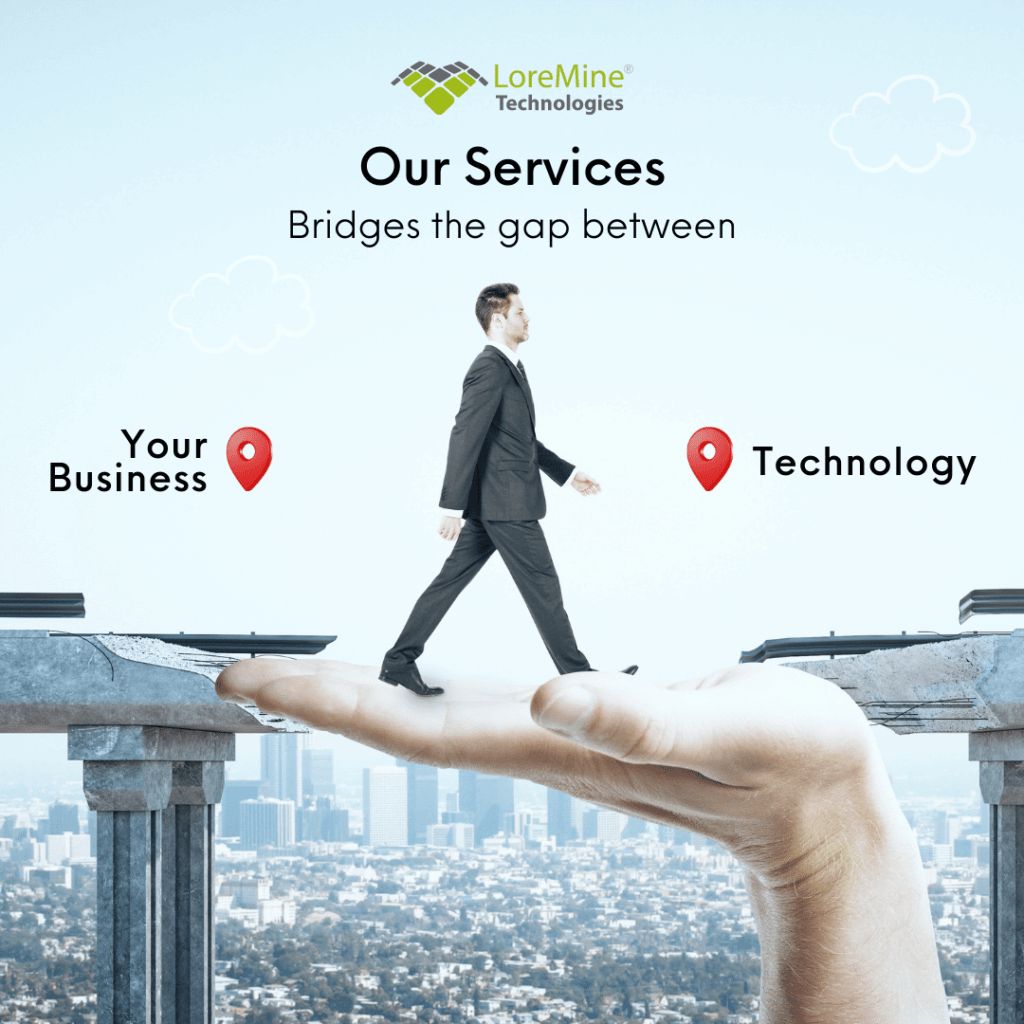How does Technology align with Business Objectives to drive growth?
The gap between business objectives and technology department has undergone tremendous transformation in today’s quickly expanding digital ecosystem. In the past, business objectives and technology department objectives were typically operated in silos, resulting in a gap between the organization’s strategic vision and its technological capabilities. Organizations have recognized the need for a more integrated approach as technology continues to disrupt industries. They also understood that technology is critical to accomplishing strategic goals. Businesses have been forced to reconsider their strategy as a result of the digital transformation wave, putting technology at the heart of their operations. This blog investigates the reasons for the shrinking gap, the benefits it delivers, and the tactics organizations use to match their business objectives with those of the technology department. You can also explore how we helped our clients to bridge this gap.
Driving Forces Behind Alignment of Business and Technology Departments
Several major variables have led to the narrowing of the gap between corporate and technological goals. First and foremost, with the introduction of digital experiences, customer expectations have increased, necessitating organizations’ effective use of technology to match these needs. Furthermore, the rise of data analytics and artificial intelligence has provided businesses with significant insights into customer behavior, allowing them to make informed business decisions.
Additionally, the demand for agile and scalable operations has compelled firms to work closely with technology departments. Cloud computing and DevOps approaches have made technology an essential component of strategic planning. Furthermore, the increasing threat landscape and the necessity for strong cybersecurity measures have increased collaboration between business and technology departments in order to protect critical data.
What are the Benefits of Bridging the Gap?
Organizations gain greatly from the synchronization of business objectives with technology department objectives. It encourages cross-functional collaboration, which allows business leaders and engineers to jointly explore new opportunities and develop solutions that promote success. Furthermore, as technology is strategically leveraged to automate processes, optimize workflows, and streamline operations, operational efficiency improves.
Aligning business and technology goals enables firms to respond more quickly to market changes and customer demands. Businesses that effectively leverage technology may react swiftly to changing market conditions, capitalize on emerging trends, and provide personalized experiences to their customers. By removing redundancies and optimizing technology expenditures, firms can achieve greater cost control.
What are the Strategies for Achieving Alignment?

Organizations must apply specific tactics to create alignment between objectives of business and technology. To begin, cultivating a culture of collaboration and open communication is critical. Regular interactions, cross-functional teams, and common goals can help to bridge the gap between departments and allow for a better understanding of business requirements.
Second, businesses should invest in training great executives who understand both business and technology. This ensures that decision-making processes take into account the overall impact of technology on accomplishing strategic goals. Furthermore, encouraging continued education and professional development for personnel aids in the closing of knowledge gaps between business and technology teams. Regular performance evaluations and feedback loops ensure that business and technology objectives remain aligned over tim
How LoreMine Technologies helped businesses to bridge the gap?
LoreMine Technologies has assisted various firms in bridging the gap between business and technology objectives. By offering the appropriate software solutions, we enabled our clients to focus on their primary business. We have supplied bespoke solutions that integrate smoothly into their existing systems, boosting efficiency, production, and profitability, by thoroughly understanding the particular demands of each firm. We have helped organizations find and harness the proper technology to promote growth and stay ahead in a competitive market by providing complete consulting services and a collaborative approach. Our initiatives succeed because of the power of innovation and our dedication to creating the best software. Here are some of the solutions we offered to our clients from various industries to match their business objectives with those of the technology department:

1. EdTech
The client is trying to build an online tutoring platform and his initial attempt did not materialise. This gave us a chance to co-create a detailed specification using the client’s inputs. We have developed one of the best-in-class online-tutoring platforms for students, teachers and coaching centres. The web application has features like whiteboard, one-to-one or group classes option, session scheduling, billing, online payment, wallet, chat and more. Security and scalability were the two major factors that we considered while selecting the development platform. The client is having students and teachers from many parts of the world. Further enhancements are being done too.
2. Multi-family housing data
The client owns a company that collects, analysis and reports housing data for investors, brokers, managers, developers, planners and lenders. They collect data on a day to day basis and keep the database up to date. The client was finding it difficult to manage large amount data with the system they had. Since we have been working with Coldfusion applications from its very early stages, we understood the limitations quickly and suggested migrating the application to an open-source platform. The web application that we developed help the client to collect, analyse, process and generate housing data reports effectively.
3. FinTech
The client is a FinTech company that is providing a SaaS platform to manage FCA Finance and Insurance Compliance for the automotive dealers in the UK. They experience difficulty in managing the FCA compliance by himself and this led him to think of developing a fintech application. We have successfully implemented a paperless easy, intuitive and efficient cloud-based web application to manage the finance and insurance compliance as per the FCA guidelines. The platform improves productivity, efficiency and document management. It is very cost-effective too. The client is delighted and have total peace of mind with his FCA compliance activities.
4. AgriTech
A 100-year-old Indian plantation company, that has now diversified into Consumer Products, Natural Food Ingredients and many more. Sending out account statements, invoices and TDS/TCS certifications to its clients and vendors numbering to a few thousands was a real cumbersome and time-consuming affair for the company accounts department. We have developed a solution that drastically reduced the workload of the accounts department. Our web application pulled data from the SAP system and presented the necessary finical reports required by the client’s customers. This is a very efficient, cost effective and easy to use application.
Organizations may harness the full potential of technology to achieve their strategic goals by recognizing the interconnected nature of business and technology. Businesses can position themselves for success in today’s quickly shifting digital landscape by encouraging cooperation, embracing innovation, and aligning objectives.
So, do you have an interesting project to talk about?
Contact us right away.
